Lesson 13: Creating Reports
/en/access2013/more-query-design-options/content/
Introduction
If you need to share information from your database with someone but don't want that person actually working with your database, consider creating a report. Reports allow you to organize and present your data in a reader-friendly, visually appealing format. Access makes it easy to create and customize a report using data from any query or table in your database.
In this lesson, you will learn how to create, modify, and print reports.
To create a report:
Reports give you the ability to present components of your database in an easy-to-read, printable format. Access lets you create reports from both tables and queries.
- Open the table or query you want to use in your report. We want to print a list of cookies we've sold, so we'll open the Cookies Sold query.
 The Cookies Sold query
The Cookies Sold query - Select the Create tab on the Ribbon. Locate the Reports group, then click the Report command.
 Clicking the Report command
Clicking the Report command - Access will create a new report based on your object.
- It's likely that some of your data will be located on the other side of the page break. To fix this, resize your fields. Simply select a field, then click and drag its edge until the field is the desired size. Repeat with additional fields until all of your fields fit.
 Resizing fields in the report
Resizing fields in the report - To save your report, click the Save command on the Quick Access toolbar. When prompted, type a name for your report, then click OK.
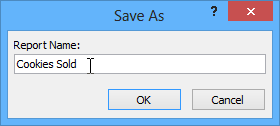 Saving and naming the report
Saving and naming the report
Just like tables and queries, reports can be sorted and filtered. Simply right-click the field you want to sort or filter, then select the desired option from the menu.
Deleting fields
You might find that your report contains some fields you don't really need to view. For instance, our report contains the Zip Code field, which isn't necessary in a list of orders. Fortunately, you can delete fields in reports without affecting the table or query where you grabbed your data.
To delete a field in a report:
- Click any cell in the field you want to delete, then press the Delete key on your keyboard.
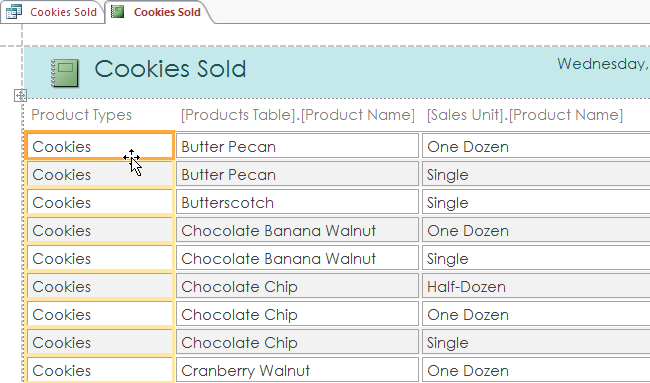 Deleting a field
Deleting a field - The field will be deleted.
When you delete a field, be sure to delete its header as well. Simply select the header and press the Delete key.
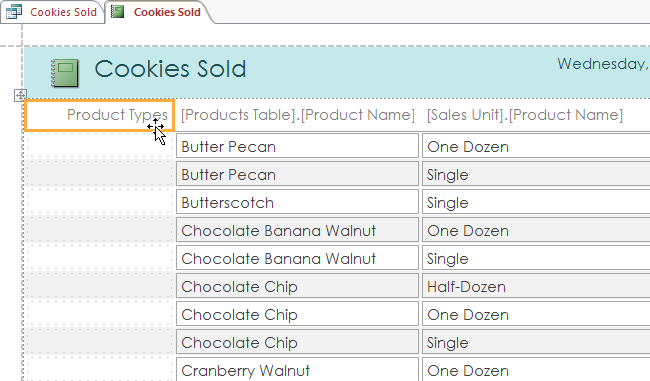 Deleting a field header after deleting the related field
Deleting a field header after deleting the related fieldPrinting and saving reports in Print Preview
While you can print reports using commands in the Backstage view, you can also use Print Preview. Print Preview shows you how your report will appear on the printed page. It also allows you to modify the way your report is displayed, print it, and even save it as a different file type.
Click the buttons in the interactive below to learn about Print Preview.
Print
Click the Print command to print your report.
Page Size Options
With page size options, you can set the width of the margins in your report.
Page Layout Options
Here, you can change the orientation of your report. Select either portrait (tall) or landscape (wide). You can also create columns or click the Page Setup command for more layout options.
Zoom Options
With zoom options, you can decide how much of the report you want to see on screen. You can also opt to view multiple pages at once.
Export Options
Export options allow you to save your report in another format. This makes it possible to view your report in other programs.
Close Print Preview
Click here to exit Print Preview mode.
To print a report:
- From the Home tab, click the View command, then select Print Preview from the drop-down list. Your report will be shown as it will appear on the printed page.
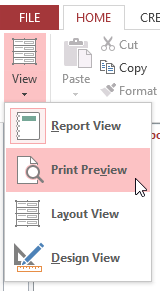 Switching to Print Preview view
Switching to Print Preview view - If necessary, modify the page size, margin width, and page orientation using the related commands on the Ribbon.
 Page setup commands in Print Preview
Page setup commands in Print Preview - Click the Print command.
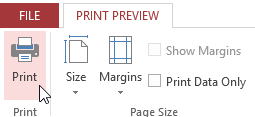 Clicking the Print command
Clicking the Print command - The Print dialog box will appear. Set any desired print options, then click OK.
- The report will be printed.
Saving reports
You can save reports in other formats so they'll be viewable outside of Access. This is called exporting a file, and it allows you to view and even modify reports in other formats and programs.
Access offers options to save your report as an Excel file, text file, PDF, HTML document, and more. Experiment with the different export options to find the one that best suits your needs.
To export a report:
- From the Home tab, click the View command, then select Print Preview from the drop-down list.
- Locate the Data group on the Ribbon.
- Select one of the file type options, or click More to see options to save your report as a Word or HTML file.
 Choosing an export option
Choosing an export option - A dialog box will appear. Select the location where you want to save the report.
- Enter a file name for the report, then click Publish.
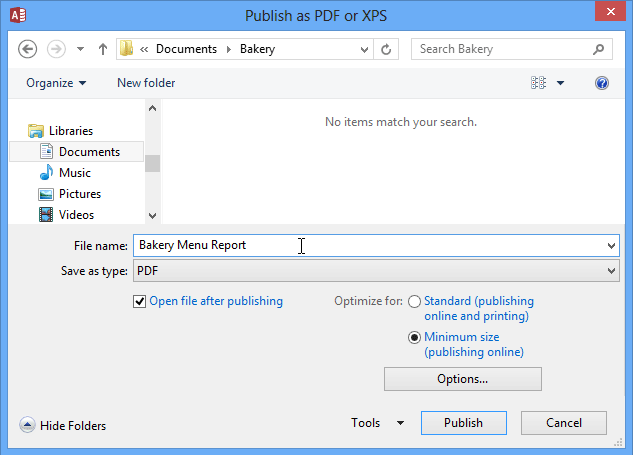 Exporting a report
Exporting a report - A dialog box will appear to notify you that your file has been successfully saved. Click Close to return to your report.
Some export options will cause the Export Wizard to appear. Simply follow the instructions to export your report.
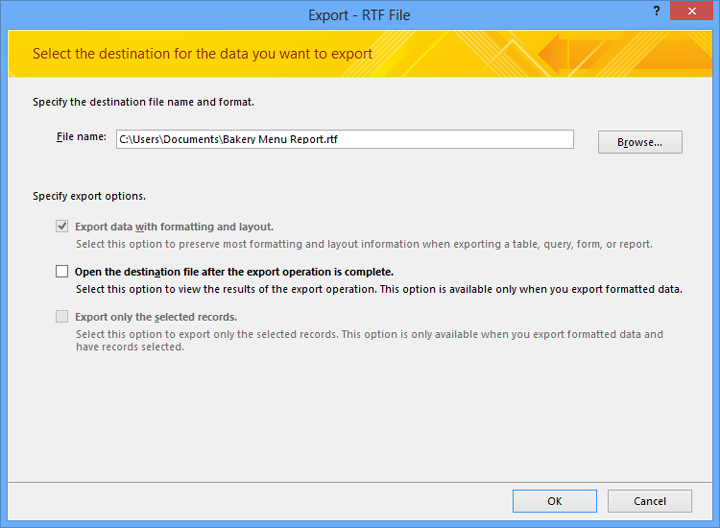 Using the Export Wizard
Using the Export Wizard
Challenge!
- Open an existing Access database. If you want, you can use our Access 2013 sample database.
- Open the Customers Who Live Nearby query, and use it to create a report.
- Resize the fields and rows so all information is visible.
- Move any fields located on the right side of a page break onto the same page as the other fields.
- Export the report as a PDF.
/en/access2013/advanced-report-options/content/


 The Cookies Sold query
The Cookies Sold query Clicking the Report command
Clicking the Report command Resizing fields in the report
Resizing fields in the report Saving and naming the report
Saving and naming the report Deleting a field
Deleting a field Deleting a field header after deleting the related field
Deleting a field header after deleting the related field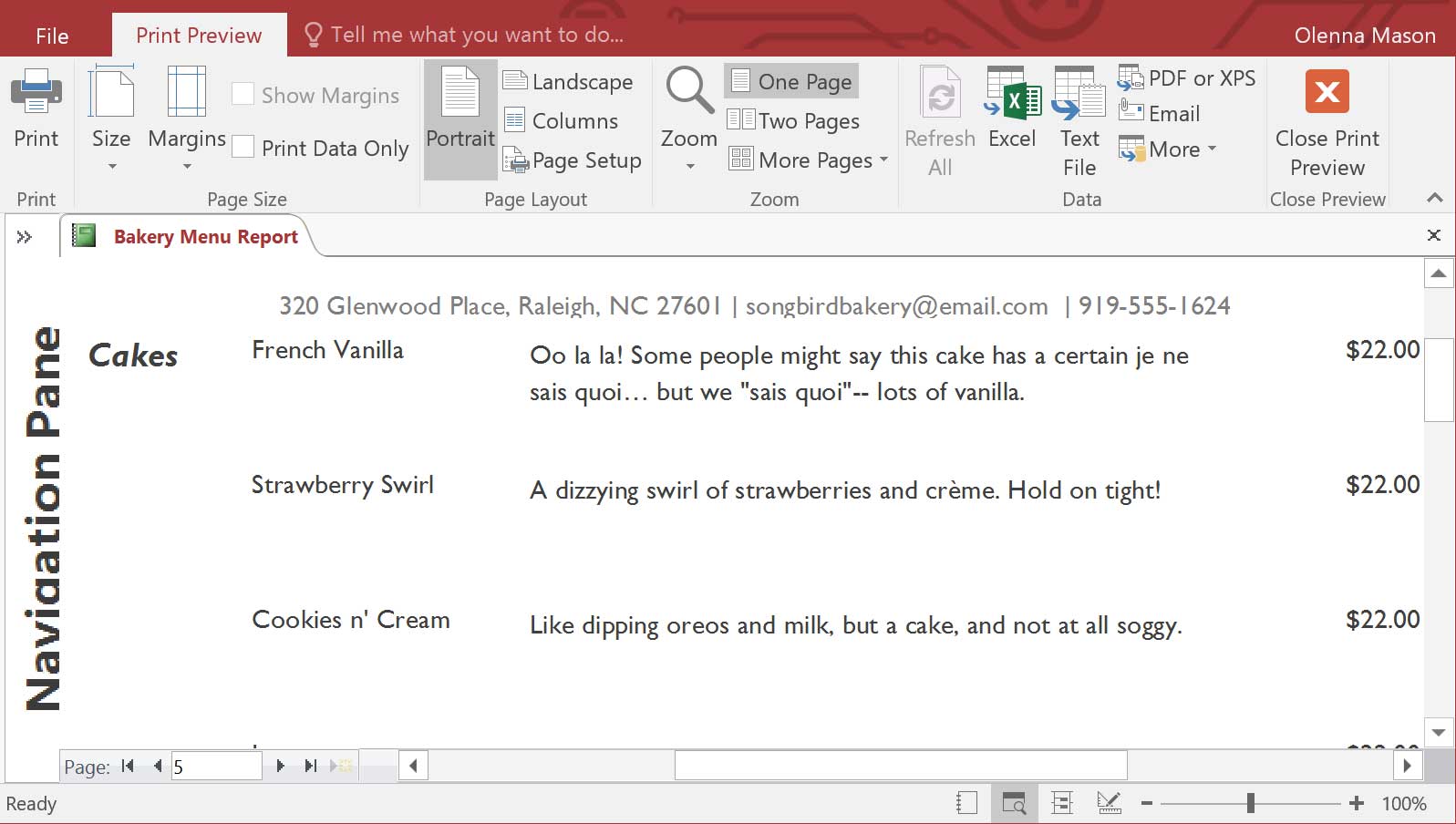
 Switching to Print Preview view
Switching to Print Preview view Page setup commands in Print Preview
Page setup commands in Print Preview Clicking the Print command
Clicking the Print command Choosing an export option
Choosing an export option Exporting a report
Exporting a report Using the Export Wizard
Using the Export Wizard